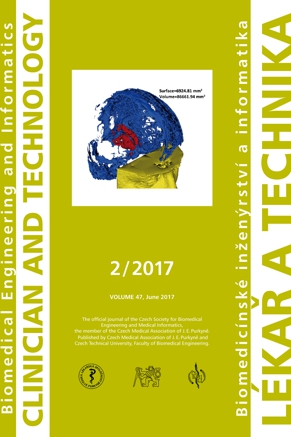PERISTALTIC FLOW OF LITHOGENIC BILE IN THE VATERI'S PAPILLA AS NON-NEWTONIAN FLUID IN THE FINITE-LENGTH TUBE: ANALYTICAL AND NUMERICAL RESULTS FOR REFLUX STUDY AND OPTIMIZATION
Keywords:
tapered tube, finite length tube, peristalsis, Carreau fluid, bile, papillary stenosis, the Vateri's papilla, duct shape optimizationAbstract
Bile is one of 32 bio-fluids in the human body. Lithogenic bile (bile with tendency for the gallstones formation) is the pathological state of bile. Rheological properties of lithogenic bile differ from normal one. The Vateri's papilla is the narrowest duct in the biliary system. Peristaltic motion plays important role in the bile flow in the Vateri's papilla. In the literature, there are many papers devoted to peristaltic flow of fluids in the infinite length tubes. There are not many papers devoted to peristaltic flow of fluids in the finite length tubes. Modelling of peristaltic flow in the finite length tubes requires the imposing of boundary conditions on the ends of a tube. It leads to problem statement complication and to obtain the problem solution is getting harder. The current paper aims at developing mathematical model of the peristaltic bile transport flow through the duct at papillary stenosis as a tapered finite-length tube. It allows evaluating velocities and pressure distribution along the tube, and detecting choledochopancreatic reflux occurrence conditions. Adopting the perturbation method, the analytical solutions for velocities and pressures are obtained. Pressure distribution versus axial coordinate at different time instants are plotted for various values of Weissenberg number and amplitude ratio. It revealed that the amplitude ratio has more effect on the pressure distribution along the tube compared to the Weissenberg number. The values of the pressure gradient corresponding to reflux occurring are obtained. The comparison between developed model and numerical peristaltic model code implemented in ANSYS was made. Moreover, it is reported that the pressure drop value corresponding to average flow rate equal to zero may serve as reflux occurrence criterion. Moreover, channel shape optimization was made for subsequent stent installation to restore normal bile flow using Nelder-Mead method.Downloads
Published
Issue
Section
License
Copyright (c) 2017 Alex Kuchumov, Vadim Tuktamyshev, Marat Kamaltdinov

This work is licensed under a Creative Commons Attribution 4.0 International License.
Authors who publish with this journal agree to the following terms:
- Authors retain copyright and grant the journal right of the first publication with the work simultaneously licensed under a Creative Commons Attribution License (https://creativecommons.org/licenses/by/4.0/) that allows others to share the work with an acknowledgment of the work's authorship and initial publication in CTJ.
- Authors are able to enter into separate, additional contractual arrangements for the non-exclusive distribution of the journal’s published version of the work (e.g., post it to an institutional repository or publish it in a book), with an acknowledgment of its initial publication in this journal.
- Authors are permitted and encouraged to post their work online (e.g., in institutional repositories or on their website or ResearchGate) prior to and during the submission process, as it can lead to productive exchanges.
CTJ requires that all of the content of the manuscript has been created by its respective authors or that permission to use a copyrighted material has been obtained by the authors before submitting the manuscript to CTJ. CTJ requires that authors have not used any copyrighted material illegally, as for example a picture from another journal or book, a photo, etc. It is the author’s responsibility to use only materials not violating the copyright law. When in doubt, CTJ may ask the authors to supply the pertinent permission or agreement about the use of a copyrighted material.
The opinions expressed in CTJ articles are those of authors and do not necessarily reflect the views of the publishers or the Czech Society for Biomedical Engineering and Medical Informatics.


